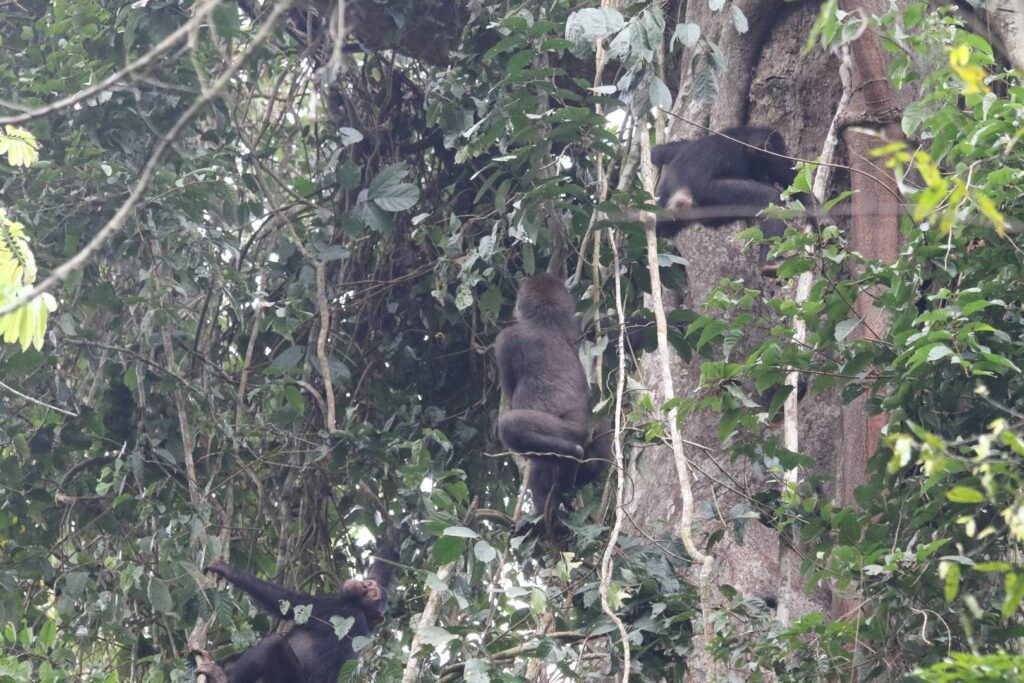Why mountain gorillas and chimpanzees don’t live together
Why mountain gorillas and chimpanzees dont live together: Chimpanzees and mountain gorillas do not coexist, despite their striking similarities and frequent confusion.
Chimpanzees and mountain gorillas are large primates that live in wooded environments. As herbivores, these creatures consume fruits, leaves, bushes, and tiny insects. Both of these apes and humans have at least 95% of the same DNA, which accounts for their intellect and human-like behaviors. There aren’t many differences between these species, but the biggest one is size; mountain gorillas are larger than chimpanzees, and they don’t have the pinkish hue that chimpanzees do.

Aside from that, these apes are comparable in every aspect, including intelligence, procreation, and lifestyle. It is remarkable that these two animal species do not coexist because of this.
The kind of forest each species inhabits is the primary factor preventing chimpanzees and mountain gorillas from coexisting. Chimpanzees reside in relatively low wet forests because they can survive at low elevations, but mountain gorillas live in high altitude mountain forests because they thrive there. Thus, that is the main cause of their separation.
In addition, there are other scientific explanations that wildlife experts can provide; they can be found in many wildlife journals and publications. However, for the sake of this essay, the aforementioned is the primary explanation for their separation.
Throughout Uganda, chimpanzees and mountain gorillas can be found in several parks. Bwindi National Park and Mgahinga National Park are Uganda’s mountain gorilla parks, whereas Kalinzu Forest, Budongo Forest, Ngamba Island, Kyambura Gorge, and primarily Kibale National Park are the country’s chimpanzee trekking destinations.
People travel to any of these parks and sites throughout the year to see the corresponding primates in their native environments. People either go on chimpanzee or mountain gorilla expeditions to see the primates.
In the current COVID-19 period, you should be aware that, in order to protect both you and the primates, you must follow all the COVID-19 SOPs when you go mountain gorilla or chimpanzee trekking.
You go into the jungle and spend some time looking for the primates for both trekking excursions. Once you locate them, you will spend an hour with them before leaving the forest. Trekking with mountain gorillas takes five to nine hours, whereas trekking with chimpanzees takes four to six hours. However, the reason for this time discrepancy is that, in contrast to chimpanzees, which remain at lower elevations, mountain gorillas remain deeper in the high altitudes, so you have to spend more time looking for them.
There are not many differences between the rules and regulations for trekking mountain gorillas and chimpanzees. These include, but are not limited to, maintaining a 7-meter distance from the primates, avoiding activities that could aggravate them, not littering the forest, not using flash photography when photographing the primates, not feeding them, not staring into their eyes, and not trekking when ill, especially if you have COVID-19. Before the walk and even through your tour operator, you are informed of all these rules.
Trekking with chimpanzees costs $200 USD in Uganda, while trekking with mountain gorillas costs $700 USD. In Uganda, primates are trekked throughout the year.



